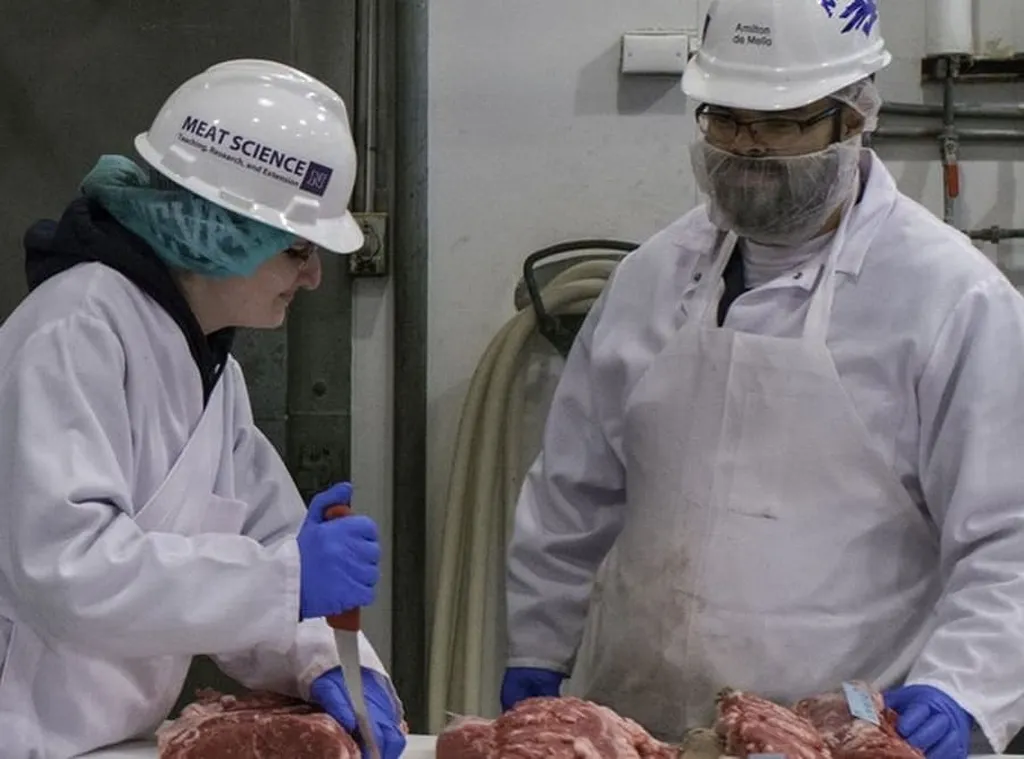In the ever-evolving landscape of meat processing, one factor remains constant: the critical importance of food safety. A recent study published in *Harčova Nauka ì Tehnologìâ* (translated to English as *Food Science and Technology*) sheds light on the hygienic design of meat processing facilities, offering a roadmap for enterprises aiming to bolster their food safety measures and meet international standards. Led by O. Synytsia from the Odesa National University of Technology, the research delves into the theoretical, regulatory, and practical aspects of hygienic design, providing a comprehensive analysis that could reshape the future of the meat processing industry.
The study underscores the significance of hygienic design as a preventive tool against product contamination, a notion that has gained traction amidst increasing sanitary requirements and consumer expectations. “Hygienic design is not just about meeting regulatory standards; it’s about building consumer trust and enhancing brand reputation,” Synytsia explains. This sentiment resonates with the industry’s shift towards transparency and quality assurance, driven by discerning consumers and stringent regulatory bodies.
The research presents a systematic analysis, covering all levels of facility design—from site selection and architectural zoning to the choice of construction materials and internal flow organization. It emphasizes the importance of sanitary protection zones and the zoning principle, which involves dividing enterprise premises into functional areas based on microbiological risk levels. Synytsia’s work highlights the necessity of establishing sanitary barriers, airlocks, sanitation checkpoints, and positive air pressure systems in ‘clean’ zones, all of which contribute to a robust food safety framework.
A significant portion of the study is dedicated to the analysis of construction materials and design solutions, providing a detailed description of hygienic equipment design requirements. The research also summarizes international best practices in organizing personnel, raw material, finished product, and waste flows. Key principles include physical and organizational segregation of flows, unidirectional movement, and the establishment of barriers between zones with different hygiene statuses.
The practical implications of this research are vast. For meat processing facilities, implementing these hygienic design principles can lead to improved food safety, reduced contamination risks, and enhanced compliance with international standards. This, in turn, can open doors to foreign markets, boost brand reputation, and build consumer trust. As Synytsia notes, “The implementation of systematic hygienic design contributes to the sustainable development of the food industry, promoting public health and enhancing the competitiveness of domestic producers.”
Moreover, the study’s findings could influence future developments in the field, encouraging enterprises to adopt a proactive approach to food safety. By integrating hygienic design principles into their operations, meat processing facilities can stay ahead of regulatory requirements and meet the evolving expectations of consumers. This proactive stance not only safeguards public health but also fosters a more competitive and sustainable food industry.
In conclusion, Synytsia’s research serves as a timely reminder of the pivotal role that hygienic design plays in ensuring food safety. As the meat processing industry continues to evolve, the adoption of these principles will be crucial in shaping a safer, more transparent, and more competitive future. For those in the industry, the message is clear: investing in hygienic design is not just about compliance; it’s about building a safer, more trustworthy, and more successful enterprise.

